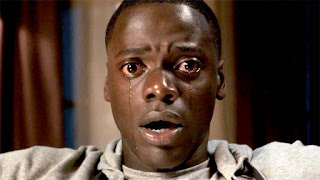Via businessinsider.com by Erin Brodwin
If you've seen the movie "Get Out," you're probably familiar with "the Sunken Place." If not, here's a quick summary: The main character, Chris (played by Daniel Kaluuya), gets hypnotized by his girlfriend's mother, Missy (played by Catherine Keener). By methodically stirring her tea, Missy lands Chris in a state of consciousness where he's aware of what's going on around him but is paralyzed and powerless to move. It's as if his body has sunk deep into the floor while his mind has been caught or trapped at the surface.
This altered state of consciousness is a bit like what a group of researchers sought to study in a recent paper published Monday in the journal Nature Neuroscience, which peered into the brain's activity while it is in the grips of a dream.
They found that when we're deep in a dream, our brain exhibits a pattern of activity that is so specific it can be used to predict whether a person is dreaming. That activity occurs in a region at the back of the brain that the study authors dub a "hot zone." They also found that dreams were not confined to REM sleep but could occur during non-REM sleep as well, something that contradicts years of previous research.
Most important, though, dreams may provide a helpful window into the world of conscious thought, something scientists have spent decades trying to find.
To sleep, perchance, to dream
For decades, scientists have been trying to suss out how our brain activity changes when we're conscious (i.e., awake) from when we're unconscious (i.e., asleep and not dreaming, in a coma, or under anesthesia) as a means of getting more information on consciousness itself. But sleep is the only time consciousness fades naturally.
So what do our brains look like when we're naturally robbed of our normal alertness? Do they go quiet? Or do they hum and buzz with activity much as they do when we're awake? What about when we're conscious at the level of dreaming but shut off from reality?
The new findings suggest that when we're dozing off and not dreaming, our noggins display an uptick in a type of low-frequency activity linked with non-REM sleep in a region of the brain toward the back of the skull linked with recalling the specific contents of an experience. When we're asleep and dreaming, however, the low-frequency activity in this area drops, giving way to more high-frequency activity that then appears to spread toward other parts of the brain that are involved in encoding and storing memories.
This could mean that a regular low-frequency mode of activity in this part of the brain acts as a sort of steady-state buffer that blocks us from what the researchers call "experiences" (or what we recall, when we awaken, as dreams). When that low-frequency mode gets switched off, our dozing brains are free to create new experiences, or dreams. And the content of those dreams — be it friends' faces, the school we attended as children, or an imaginary world of rainbow highways and flying cars — is linked to whichever areas of the brain are firing. When a participant's dream contained faces or people conversing, for example, the areas of the brain linked with facial processing and speech fired up.
This is remarkably similar to how the brain works when we're awake. That means dreaming could be just the window we need into the world of conscious thought, as opposed to previous studies of consciousness that have looked at people under anesthesia or in a coma.
"Dreaming," the authors write in their study, "may constitute a valuable model for the study of consciousness with implications beyond sleep."
Maybe with this knowledge, researchers will be able to get a better look at the real Sunken Place — the land of dreams.
Source


No comments:
Post a Comment